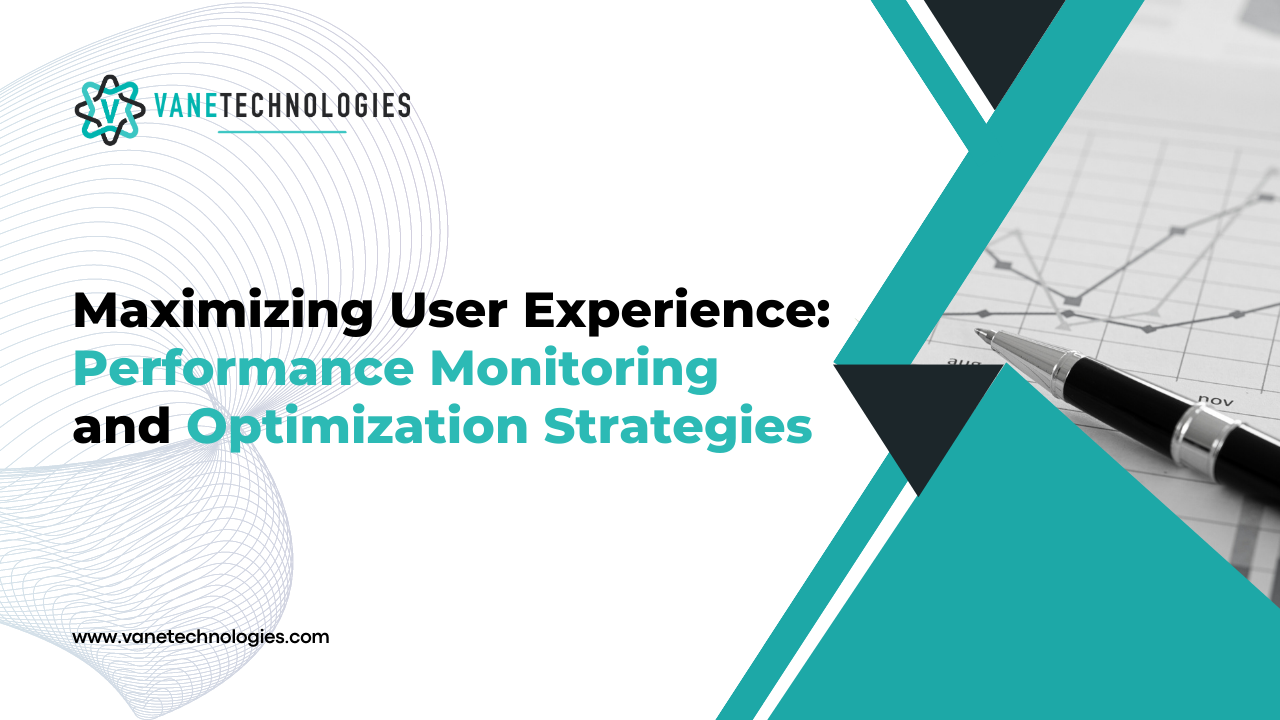
BLOGS

Maximizing User Experience: Performance Monitoring and Optimization Strategies
In today's fast-paced digital landscape, businesses rely heavily on their applications to meet customer demands and stay competitive. However, even the most cutting-edge applications can experience performance bottlenecks, leading to frustrated users and missed opportunities. To tackle this challenge head-on, let's explore the power of performance monitoring and optimization and the tools that can help businesses achieve peak application efficiency.
The Importance of Performance Monitoring:
Performance monitoring is the cornerstone of application optimization. It involves continuously tracking and analyzing various performance metrics to identify bottlenecks, latency issues, or resource constraints. By monitoring application performance in real-time, businesses gain valuable insights into areas that need improvement, enabling them to deliver a seamless user experience.
Key Metrics to Monitor:
To effectively optimize application performance, it is essential to focus on key performance indicators (KPIs) that directly impact user experience. These metrics include response time, server uptime, throughput, error rates, and resource utilization. Tracking these indicators helps pinpoint performance gaps and directs optimization efforts where they are most needed.
3. Tools for Performance Monitoring:
Thankfully, a plethora of tools exists to simplify performance monitoring and provide comprehensive insights. Some widely used tools include:
Application Performance Monitoring (APM) solutions: APM tools offer end-to-end visibility into application performance, allowing businesses to monitor and diagnose performance issues across the entire stack. Examples include New Relic, Dynatrace, and AppDynamics.
Real User Monitoring (RUM): RUM tools capture real-time user interactions with the application, helping businesses understand user behavior, identify slow-loading pages, and optimize the user journey. Popular RUM solutions include Google Analytics, Pingdom, and FullStory.
Load Testing and Profiling tools: Load testing tools such as JMeter and Gatling help simulate high user loads to measure application performance under stress. Profiling tools like YourKit and VisualVM enable developers to analyze code execution and identify performance bottlenecks at a granular level.
Optimization Strategies:
Once performance issues are identified, it's time to optimize the application. Optimization strategies can involve various approaches, such as:
Code optimization: Analyzing and improving code efficiency to reduce resource consumption and enhance response times.
Database optimization: Optimizing database queries, indexing, and caching mechanisms to minimize query latency and enhance overall database performance.
Caching and content delivery: Implementing caching mechanisms and leveraging Content Delivery Networks (CDNs) to reduce server load and deliver content faster.
Scalability and load balancing: Ensuring the application can handle increased traffic by scaling horizontally or vertically and distributing load efficiently across servers.
Conclusion:
In today's digital age, optimizing application performance is crucial for providing exceptional user experiences and maintaining a competitive edge. By embracing performance monitoring and leveraging powerful tools, businesses can proactively identify bottlenecks, fine-tune their applications, and deliver optimal performance. Stay ahead of the curve, unlock peak performance, and watch your business soar to new heights. #PerformanceMonitoring #ApplicationOptimization #EfficiencyBoost #TechTools #OptimalPerformance
![]() 1200 Brickell Ave., Suite 1950 Miami, Florida, 33131
1200 Brickell Ave., Suite 1950 Miami, Florida, 33131
![]() 1654 Calle Tulipan, Suite 100 San Juan, Puerto Rico
1654 Calle Tulipan, Suite 100 San Juan, Puerto Rico
![]() Manquehue Sur 520, oficina 205 Las Condes, RM, Chile
Manquehue Sur 520, oficina 205 Las Condes, RM, Chile






